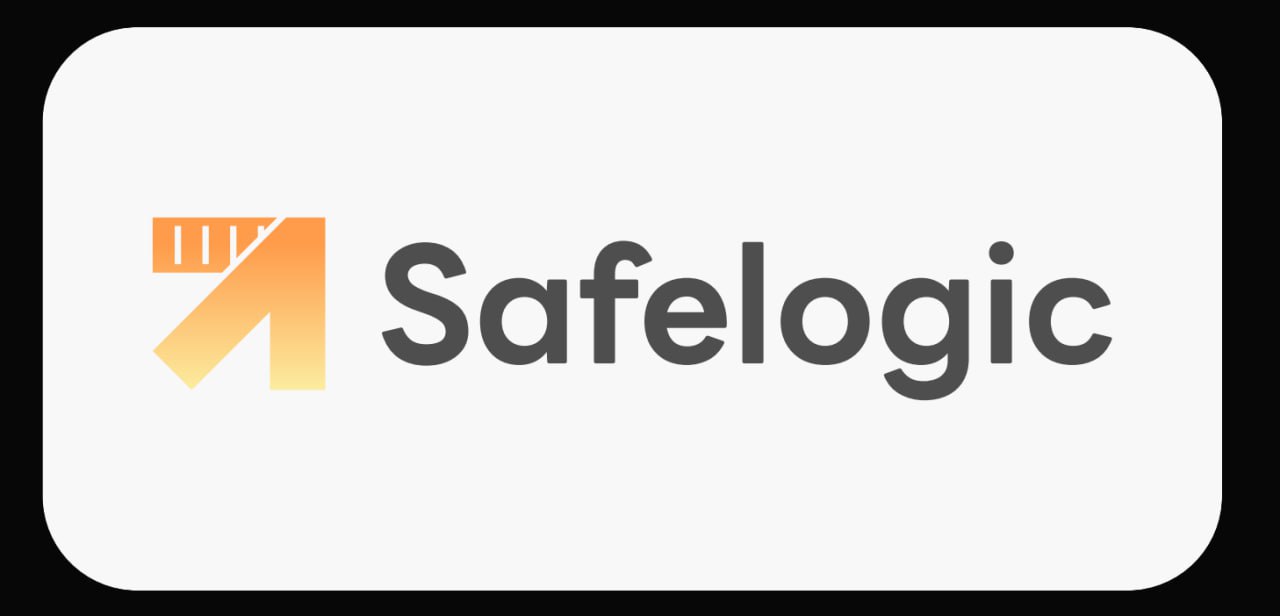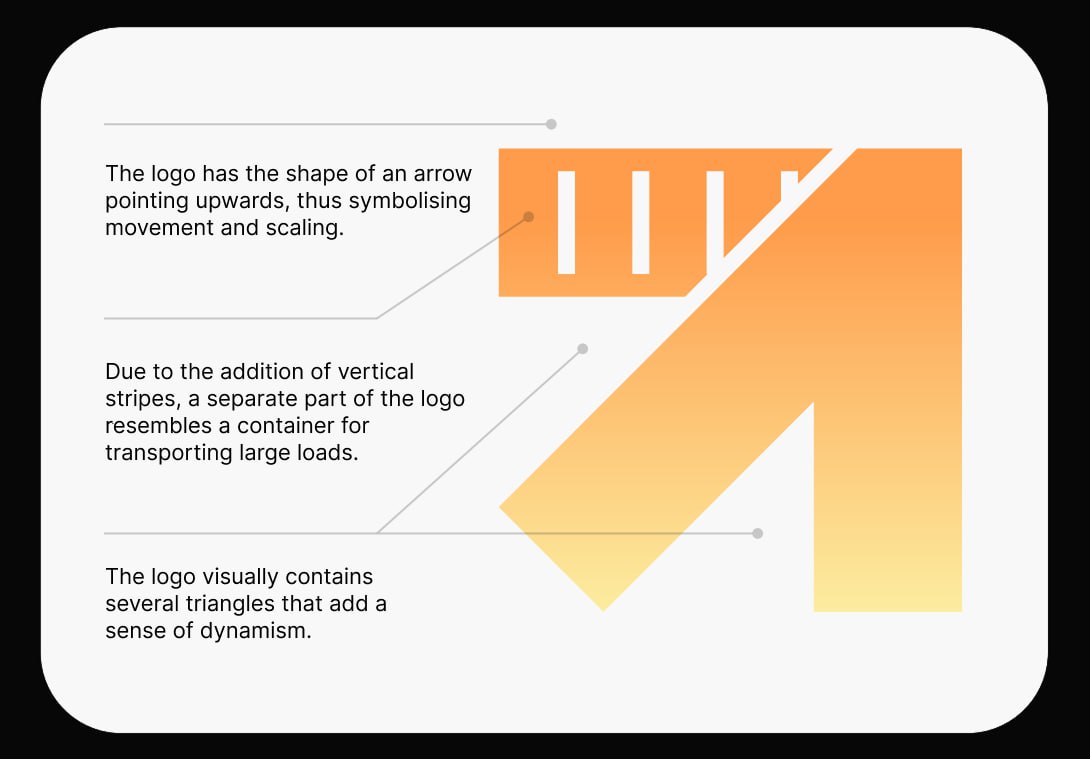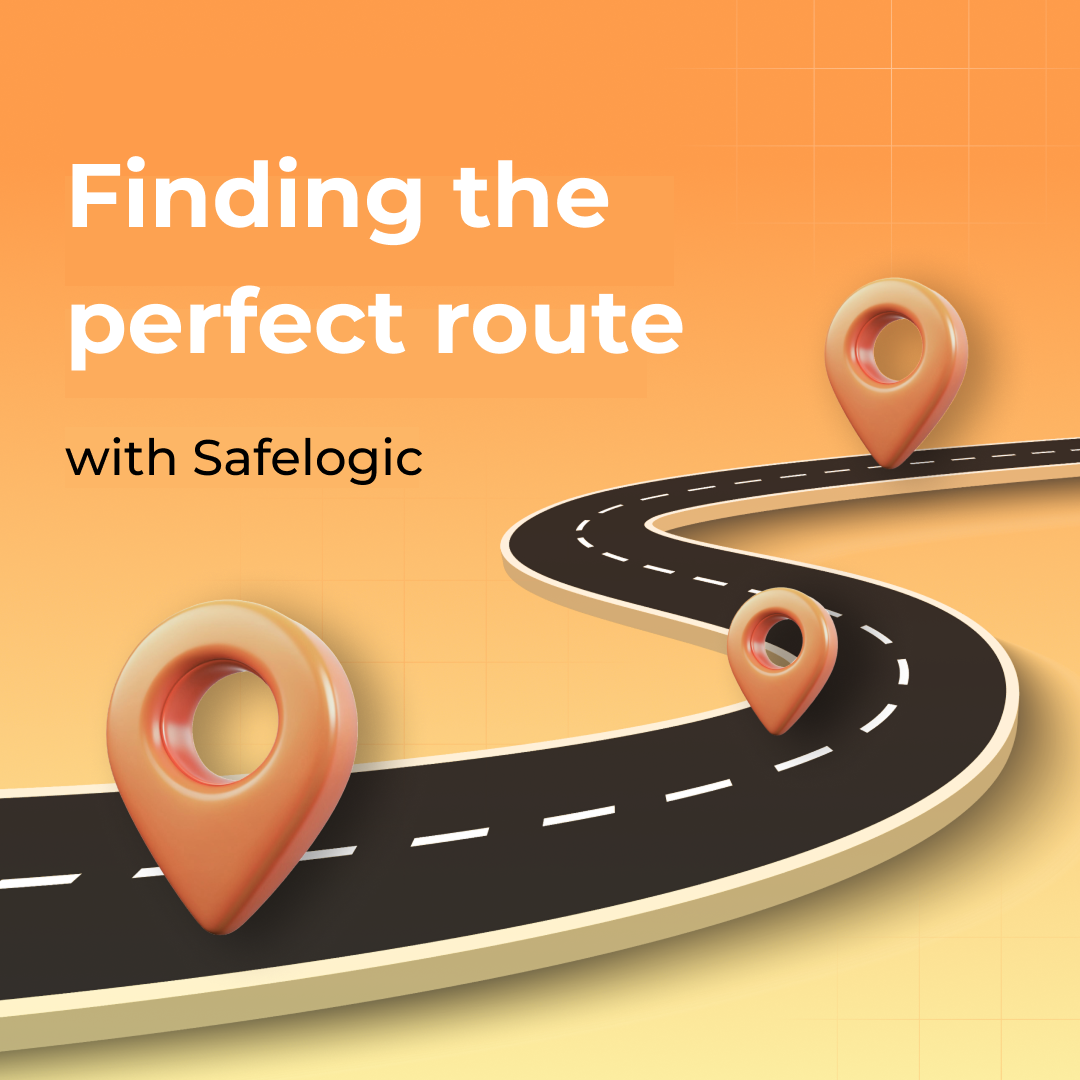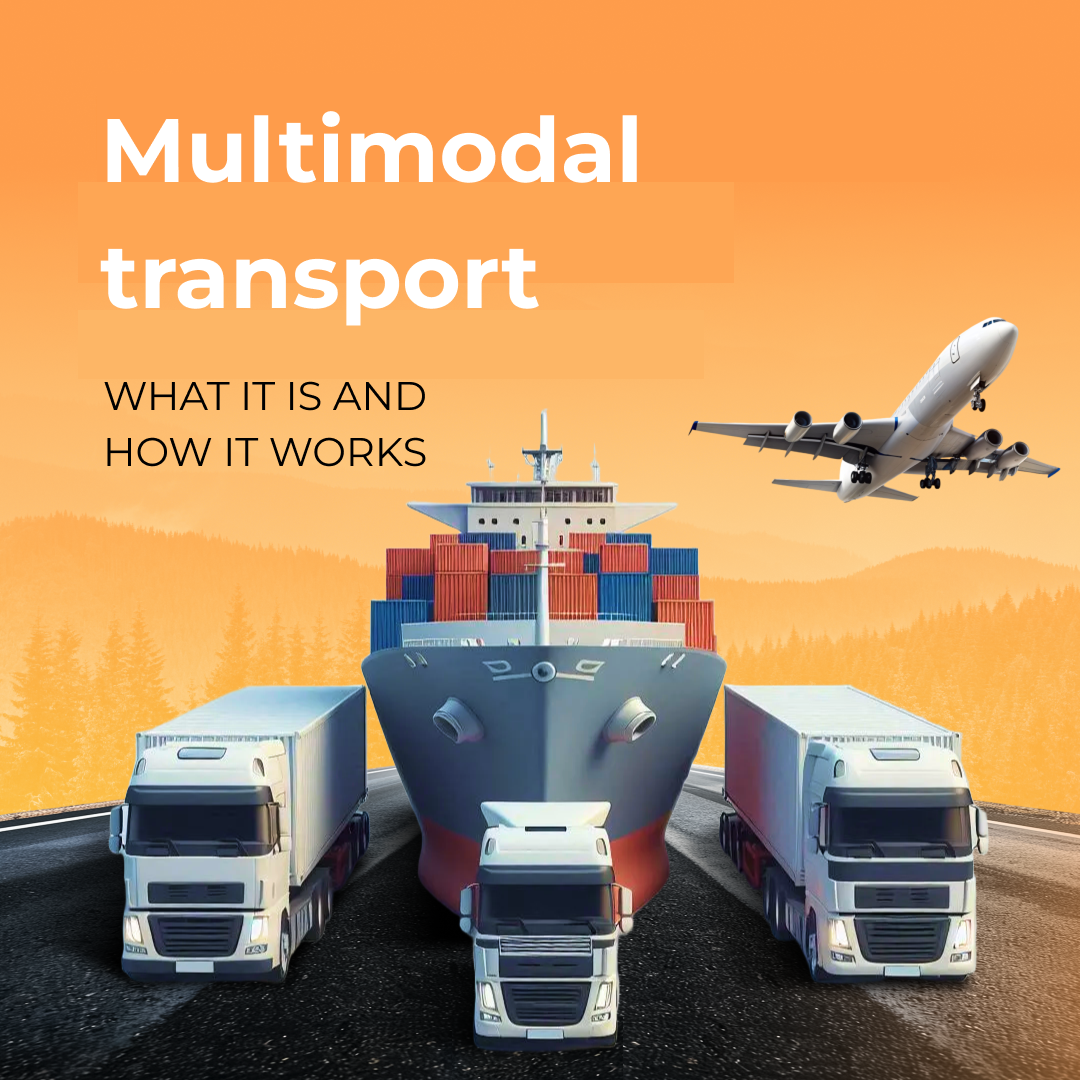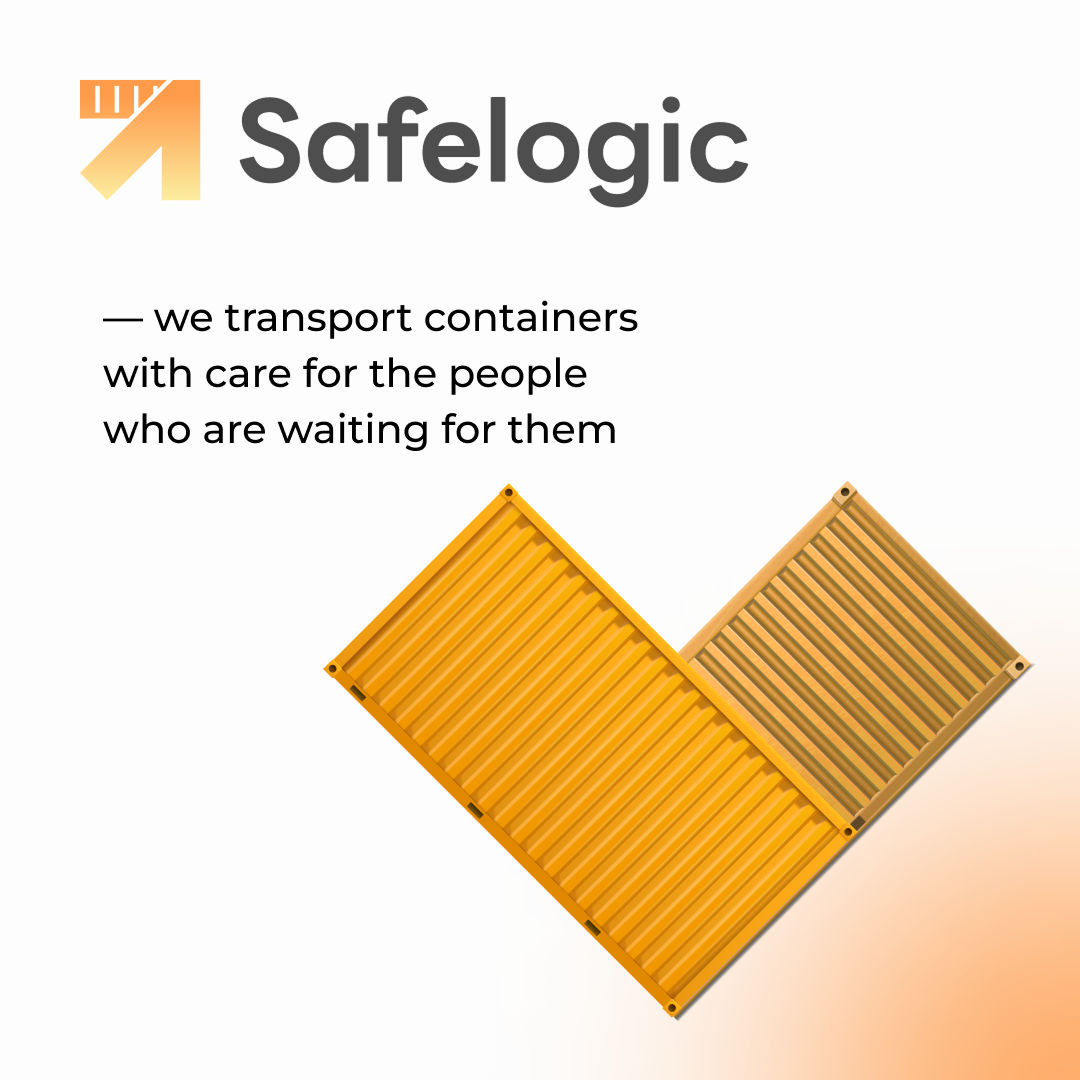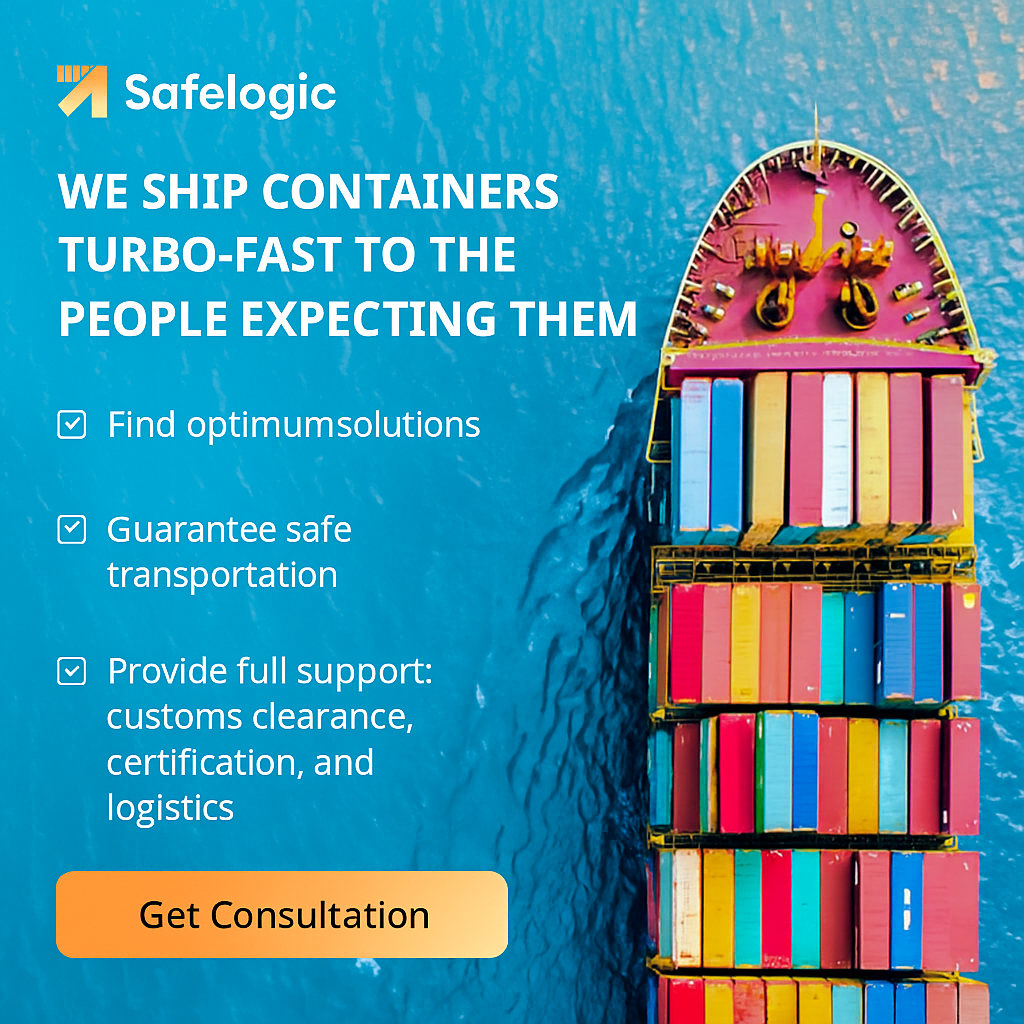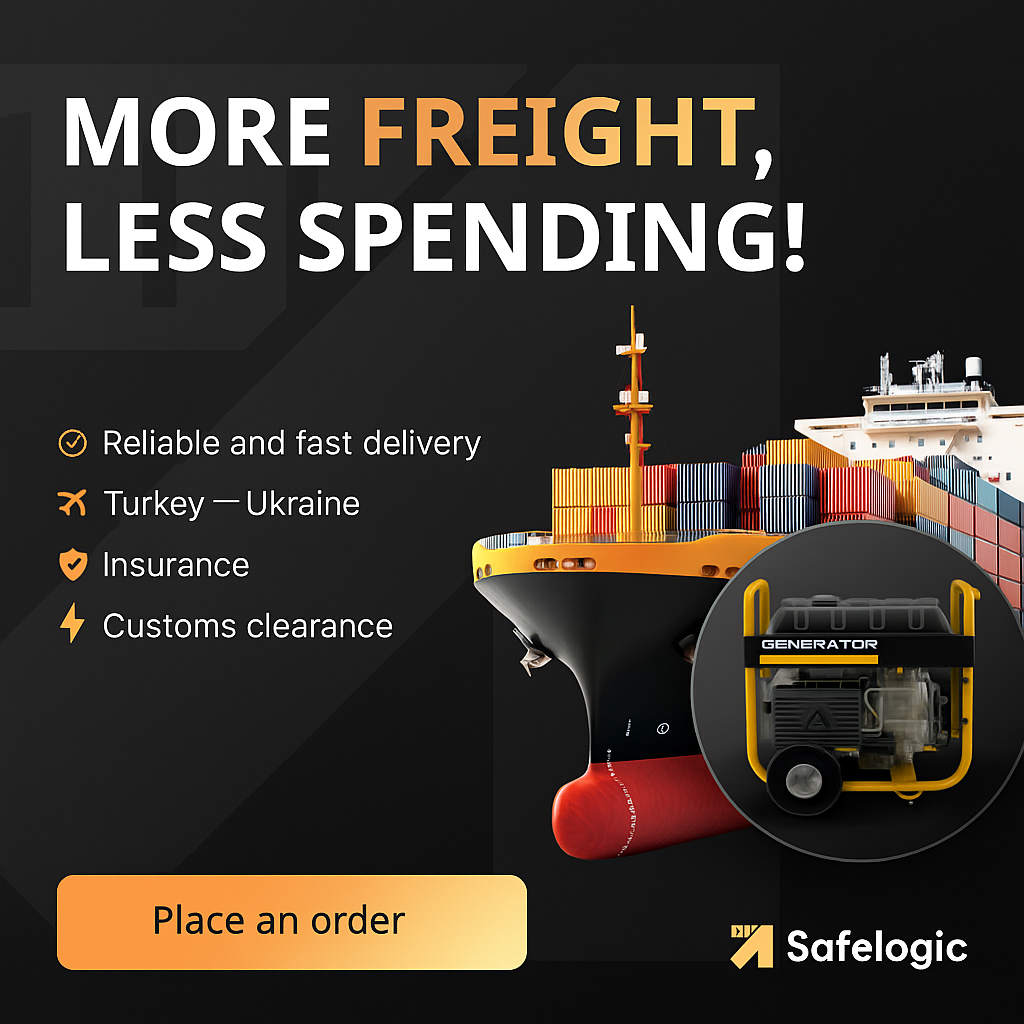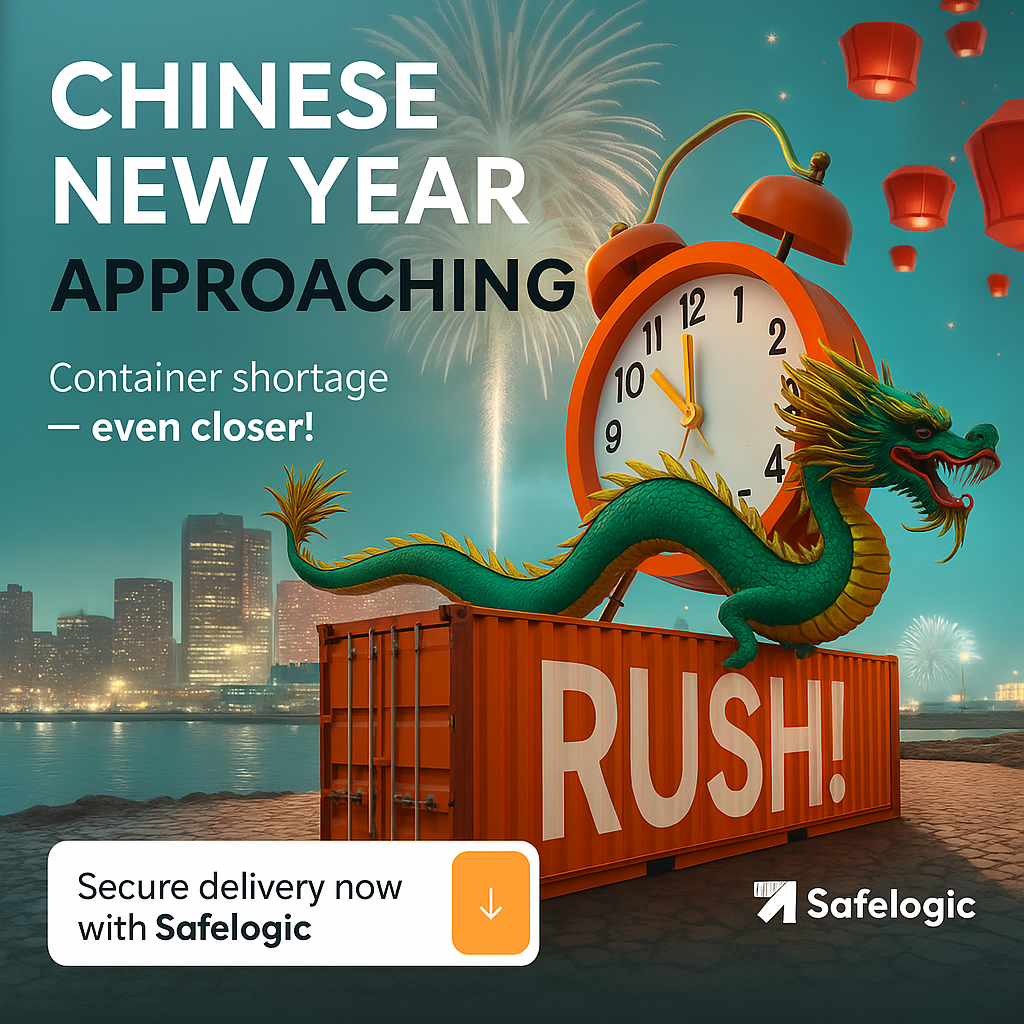We have already told you how we created a marketing strategy for Safelogic. It included the following stages:
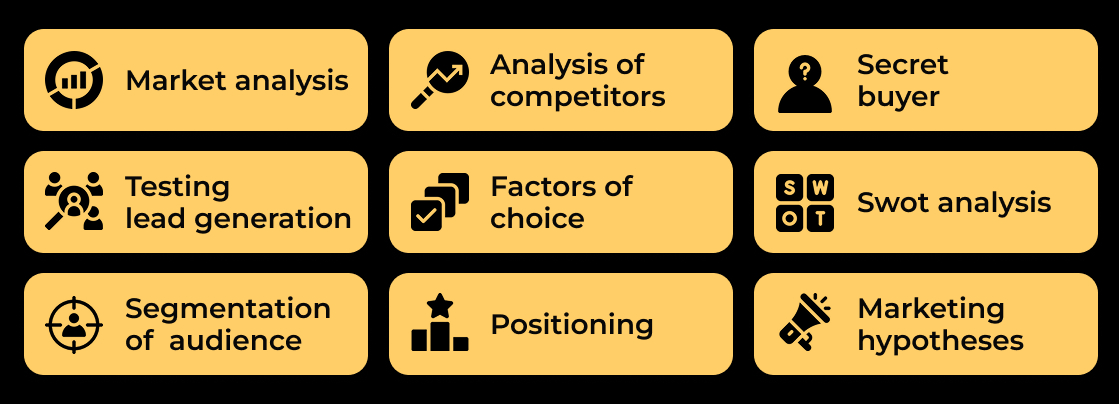
In short, the Safelogic team came to us and told us their ambitious goal:
“We want to increase the number of medium-sized customers (2 to 49 containers per month) and gradually move customers to the premium class (50+ containers), but we don’t know how to do it exactly.”
The company specialises in international logistics transport: by sea, air, rail and road. They had quality service, a team of professionals and competitive rates. But they didn’t have a full-time marketing department to help more customers get to know and choose their business.
Safelogic’s core value is that they are not just a carrier, they care about their customers. They give their customers a sense of peace of mind and security, which became the basis of our marketing strategy.
Safelogic felt the change at the strategy development stage, but then it had to implement the marketing strategy, and questions arose:
- Hire a marketer? It’s expensive, time-consuming, and one specialist is not enough — you need an analyst, targetologist, copywriter, and designer.
- Your own team? This means dozens of interviews, adaptation, and constant monitoring. And what if someone doesn’t meet KPIs or just drinks coffee while you’re trying to figure out why the ad isn’t working?
- And the most important thing is time. Businesses cannot wait for months to get their marketing on track.
That’s why Safelogic decided to outsource everything to us. With no unnecessary processes, no micromanagement — the whole system runs like clockwork.

After all, marketing is a continuous process: testing hypotheses, adapting, analysing data, scaling. If you do it on your own, it’s easy to get stuck in chaos, waste your budget on things that don’t work, and spend months looking for effective solutions.
Instead, you can outsource your marketing to a team that has been down this road dozens of times before. It’s faster, cheaper, and free of mistakes. We’re looking forward to meeting your ambitious goals.
Episode: the beginning
The task sounded like a challenge: to build a marketing system from scratch with limited resources and tight deadlines. Therefore, we immediately saw the vector that had to be developed first: to improve brand awareness and trust and create a memorable wrapper.
To do this, we needed to:
- Create a high-quality brand book.
- Develop a website.
- Launch social media.
- Start testing lead generation.
And we rolled up our sleeves and started)
To begin with, it was important for us to understand how everything works from the inside: we analysed real cases, talked to the team about key processes, and felt all the challenges the company faces on a daily basis.
We took care of all the organisational issues to build the foundation for further work and make Safelogic marketing processes simple and efficient.
The result? Live communication that works, responds to real customer needs, and highlights the company’s expertise.
To strengthen the sales department, we:
✔️ Designed a corporate email signature — a detail that adds professionalism.
✔️ Organised a photo shoot of the team — clients want to see real people, not abstract logos.
✔️ Created presentations — thought out the structure, wrote the content, and designed them in the corporate style.
✔️ Adapted all the materials into different languages — so there are no barriers to communication.
✔️ Developed a script for a video presentation — in a short, essentially without “water”.
✔️ Edited a branded video of up to 2 minutes, which effectively conveys the company’s key advantages.
A remote marketing department will allow you to focus on the development of your product and service. Now, marketing is our business.
A remote marketing department will allow you to focus on the development of your product and service. Now, marketing is our business.
Hassle-free marketing because you don’t have to spend time searching and managing.
Episode: brand book
In the morning, we received a message from a client:
“I’ve managed to arrange for our logo to be placed on the football jerseys of a local team. Can you make the logo by next Wednesday?”
Such requests always evoke mixed feelings. On the one hand, we are delighted that the client is so actively developing their brand and looking for new opportunities to promote it. On the other hand, we realise that the typical process of developing a brand book takes several weeks, and here we have less than a week to do this work. The challenge was accepted!
In this case study, we describe how we worked on developing a marketing strategy. It was then that we developed the positioning that was desirable to have before developing the brand book, at the stage of developing the marketing strategy…
Here is the positioning we came up with together with the client:
| Safelogic — We transport containers with care for the people who are waiting for them. |
Safelogic’s core value is that they care about their customers and are aware of their responsibility. Because behind every shipment there are people, their businesses, and their commitments to customers.
We have described in detail the workflow for creating a brand book in this case study.
The result was this version:
Safelogic received a powerful visual identity that became the foundation for the company’s further development. If a brand is a personality, then a brand book is its style, manner of communication and visual expression.
We went beyond the logo. It was important to create a coherent and recognisable image. We refreshed the style, chose harmonious colours that inspire confidence and emphasise the company’s technological capabilities, and chose modern fonts that add solidity and professionalism. All these elements together create the impression of reliability, stability and a high level of service.
As a result, Safelogic has not just a logo, but a complete visual identity that reflects the essence of the brand, is memorable and trustworthy. Now, everyone who sees this design — from partners to potential customers — understands that they are looking at a modern, ambitious, and professional company.
Episode: content marketing
Content marketing — a way of speaking to customers in their language, answering their questions before they even ask them, and gradually building trust.
After developing the marketing strategy, we already understood what customers care about and what criteria they use to make decisions. Taking into account the company’s positioning, key choice factors and competitor analysis, we developed a publication plan that covers all important areas: from an expert blog and social media to email newsletters and media presence.
Now, each piece of content works towards a common goal: to attract attention, engage and build trust in the brand.
And then — the process of producing content for a month:
✅ 7 posts
✅ 4 reels
✅ 15 stories
✅ 2 videos on YouTube
Examples of posts:
We call our favourite format of work a “content factory”: when we first shoot a long interview with a client, which then turns into 10+ different pieces of content: posts, reels, YouTube videos.
So, one shooting session is a lot of content.
Content should not be created chaotically. It should work systematically. So, to make the materials work for the long term, we did the following:
— Developed a system of stories and reels to engage and interact with the audience.
— Prepared a series of expert materials demonstrating the company’s experience in solving complex logistics problems.
— Defined a Tone of Voice that reflects the expertise, reliability and accessibility of the brand.
— Launched a single visual style — all materials are adapted to the brand book, which made communication recognisable and consistent.
Not just content, but one of the tools that works. Does content marketing work for you? Likes don’t count. Write to us and we’ll check it out!
It was important that we did not waste time and resources on chaotic content creation.
On the contrary, our team worked comprehensively and simultaneously covered several tasks at once.
Thanks to this, we built communication that forms trust and brings customers. And most importantly, we analysed, tested and adjusted the strategy to make everything work even more efficiently.
Episode: website development plans and the client’s decision to develop a landing page
It is important to note that advertising only attracts the attention of potential customers. Without a high-quality website that inspires trust and encourages them to leave a request, advertising traffic will remain just that — traffic.
A website — your online representation. Imagine that a large customer who is used to paying for service comes to your office. If it’s a modern, spacious office in the city centre, it inspires confidence and reinforces your image. If it’s a single room on the outskirts, the effect will be completely different. The same goes for websites: a multi-page, well-thought-out resource creates a sense of reliability, while simple landing pages are used only for mass-produced products where the main advantage is the price.
Simple one-page websites are effective if your product is aimed at a wide market and the competitive advantage is the price. However, in complex niches, advertising tools are of secondary importance. Your brand and its packaging, of which the website is a part, come first.
Our strategy involved the development of a professional multi-page website that would be optimised from the start to attract SEO traffic. But due to lack of funds, the client chose to create a landing page.
Our mission was to formulate the terms of reference and content so that the development was not just beautiful, but also worked for conversion:
✔️ We developed the structure, determined the logic of block placement, and user behaviour scenarios.
✔️ We wrote texts that emphasise the value of the company.
✔️We wrote 3 case studies showing real customer results.
✔️ We prepared an adapted English version of the website for an international audience.
We handed over all the materials to the developer, and this landing page was created under our supervision:
In the event that the client has the opportunity to return to the development of the site, we have drawn up a detailed technical specification and thought through the logic of the site so that it works not only beautifully but also effectively. We have laid the foundation that will help the business attract customers, and each element will reinforce this and work as another tool for growth.
Episode: Launch of advertising
We started from scratch:
— Developed a new structure for advertising campaigns.
— Tested positioning options.
— Created unique messages that truly reflect the company’s value.
This helped us find the best combinations of content and visuals that resonate with the target audience.
To determine which triggers work best, we created advertising texts and creatives in several variants, tested static and dynamic formats. It was important for us not just to attract attention, but to convey the company’s uniqueness, emphasise its expertise and reliability.Since the services are not massive and have their own niche audience, each message had to be accurate and convincing.
Examples of creatives:
To ensure that advertising worked systematically, we set up analytics: we implemented Google Analytics and Facebook Pixel, which allowed us to accurately track user behaviour and adjust campaigns in real time.
The advertising budget was limited, which was also a challenge for our team.
We tested several hypotheses, but unfortunately, they didn’t work. We came to the conclusion that in logistics services, testing ads with a limited budget for landing pages, instead of a full-fledged website without creating additional touchpoints, leads to the fact that interested customers do not leave requests. The requests that were received were for small volumes of transport, which did not correspond to the specifics of the client’s business.
Advertising is only a small part of marketing. The more complex the service you sell, the more touch points you need to create before a customer decides to leave a request.
Final: marketing that delivers results
While working on the project, we faced a variety of challenges. We managed to solve some of them:
✅ Developed a marketing strategy that has become a guideline for the further development of the project.
✅ Developed a positioning that truly reflects the company’s values.
✅ Developed a logo and brand book that qualitatively distinguish the company from competitors.
✅ We launched a content factory, which allowed us to create expert materials.
✅ The client received a remote marketing department without the need for hiring and adaptation.
Important insights we gained from the project:
🤔We have once again seen that in complex B2B topics, you need to build brand trust. The approach where it is enough to develop a simple landing page and launch advertising to get sales within 2-3 months does not work here. Otherwise, it would be easy to enter this market.
🤔 It takes time for a company to be noticed in the market. That’s why you need a strategy: to follow the sequence of steps and ask yourself what has changed in the market compared to when we started this journey.
Is your business ready for systematic marketing? If so, write to us. We’ll analyse your case, find your strengths, and help you implement marketing solutions that really work.
